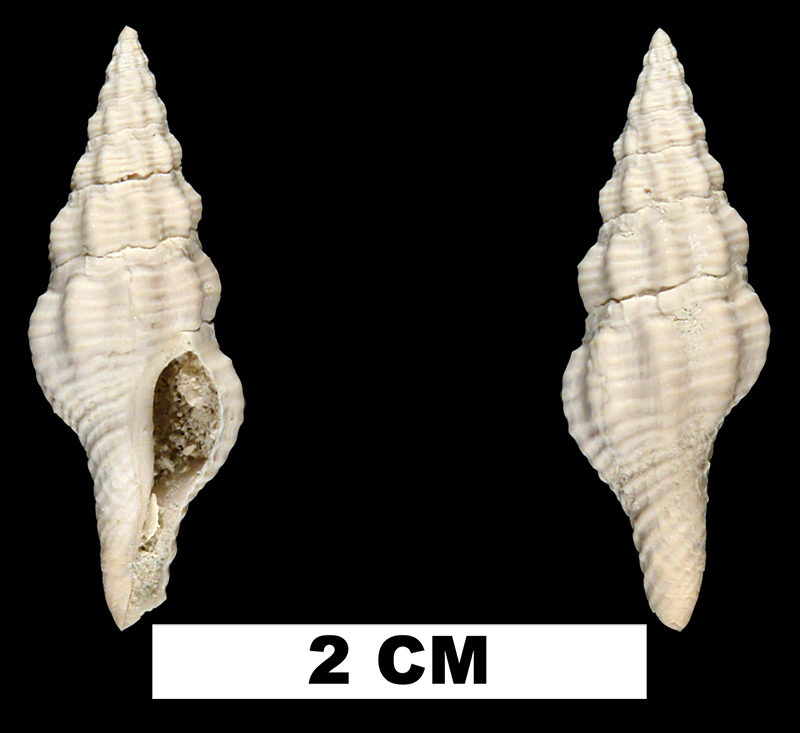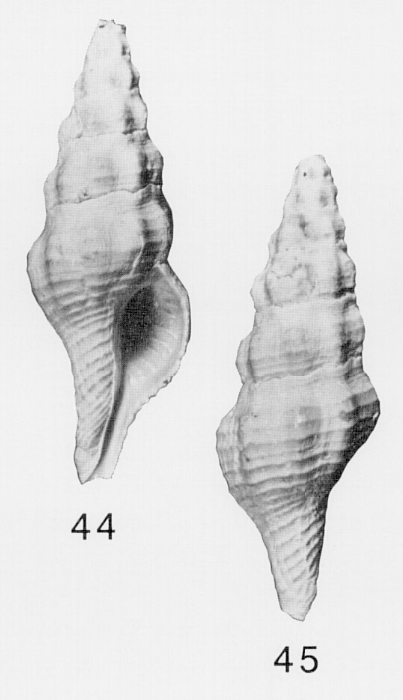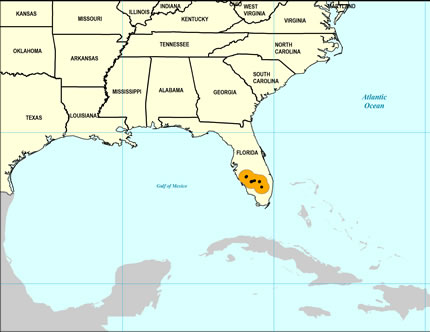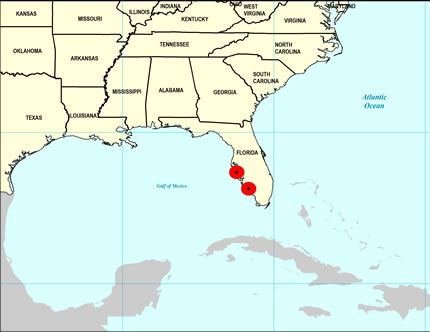
Pustulatirus caloosahatchiensis

- Phylum: Mollusca
- Class: Gastropoda
- Order: Neogastropoda
- Family: Fasciolariidae
- Genus: Pustulatirus
- Species: Pustulatirus caloosahatchiensis (Lyons, 1991)
Geological Range
Late Pliocene to Early Pleistocene; Extinct.
Paleogeographic Distribution
Southern Florida.
Remarks
Original Description (from Lyons, 1991, p. 178-182):
"Description.--Shell slender, fusiform, to 47 mm long, 15.2 mm wide, with about 11 whorls. Protoconch of 2 smooth whorls, with 0-6 indistinct axial riblets on anteriormost 1/2 whorl. Teleoconch whorls about 9, with slightly convex, moderately shouldered sides, slightly to moderately constricted at sutures. Whorls of spire with 8-9 low but well-developed axial ribs crossed by 4 weak, subequal spiral cords, with 3 weak spiral threads between cords; sutural ramp inflated, overlain by about 7 undulating spiral threads crossed by thin, irregularly spaced, axial lamellae. Body whorl with 9 relatively slender axial ribs crossed by 9 large spiral cords, with single small cords or threads between posterior 5 large cords; sutural ramp with 7 undulating spiral threads. Siphonal canal elongate, slender; dorsum with about 7 strong, oblique spiral cords, usually with single threads in spaces between; lip attached along ventral inner edge of canal, hardly developed; umbilicus rudimentary, slit-like. Aperture ovo-elongate; outer lip well-rounded, with 8-10 thin, faint lirae within; distinct but weak ridge emerging from interior onto parietal shield, forming constriction at anal sinus; columella straight, smooth, with 3 weak plicae emerging from interior, anteriormost plication smallest.
[...] Type locality.--Caloosahatchee River, Florida; by original designation (Dall 1890).
[...] Distribution.--Late Pliocene; Caloosahatchee Formation; Hendry, Glades, DeSoto, Palm Beach, Collier, and Sarasota counties, Florida.
Remarks.--Latirus caloosahatchensis is proposed as a replacement name for Latirus tessellatus Dall, 1890, which is preoccupied by L. tessellatus (Recluz, 1844) and by L. tessellatus (Kobelt, 1874). The name appeared in several important revisions published prior to Dall's work (e.g. Kobelt 1874, 1876; Tapparone-Canefri 1879; Tryon 1881; Paetel 1887).
[...] Etymology.--Named for the Caloosahatchee River, whose banks yielded the first specimens of this species. A century ago, the spelling of the name of the river ended in -ie, and both Heilprin (1886-1887) and Dall (1890) used that spelling; in present usage, the name ends in -ee."
To access this description in its original formatting through the University of Florida Digital Collections, click here.
Stratigraphic Occurrences
- Early Pleistocene
- Caloosahatchee Formation (S. FL)
- Late Pliocene
- Tamiami Formation (Pinecrest Beds) (S. FL)



